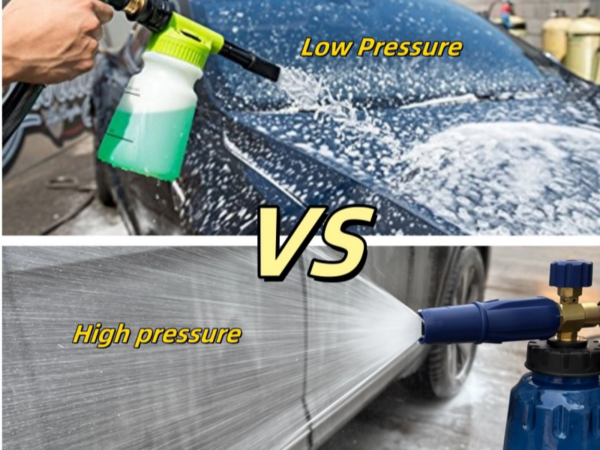Maintaining a clean vehicle is essential for preserving its appearance and value, but not all car wash tools are created equal. High-pressure and low-pressure car wash guns serve distinct purposes, each with unique advantages and limitations. Understanding their differences can help you select the best tool for your needs.
- Cleaning Power and Pressure Range
High-Pressure car washer gun:
- foam lance spray guns operate at 1200–5000 PSI, delivering a forceful, concentrated stream of water.
- Excel at removing stubborn contaminants like caked-on mud, road salt, tree sap, and bird droppings.
- Ideal for heavy-duty tasks, such as cleaning trucks, off-road vehicles, or heavily soiled surfaces.
Low-Pressure car washer gun:
- Operate at 500–1000 PSI, producing a gentler, broader spray.
- Suitable for light cleaning, such as rinsing away dust, pollen, or loose dirt.
- Perfect for routine maintenance or vehicles with delicate finishes (e.g., older paint)
- Versatility and Applications
High-Pressure spray foam gun:
- Multifunctional beyond cars: Clean driveways, patios, outdoor furniture, or gutter systems.
- Often include adjustable nozzles (e.g., multiple degrees ) and attachments like foam cannons or rotating brushes.
Low-Pressure spray foam gun:
- Focused on gentle tasks: Washing windows, applying detergent foam, or rinsing soap without splatter.
- Lightweight and easy to handle for quick, everyday use.
3.When to Use Each Tool
High-Pressure trigger gun If:
- vehicle frequently encounters mud, off-road debris, or industrial grime.
- You need a versatile tool for home and automotive deep-cleaning tasks.
Low-Pressure trigger gun If:
- You prioritize gentle care for newer cars, motorcycles, or sensitive surfaces.
- Your cleaning routine focuses on light dirt removal or applying soap/foam.
Both high-pressure and low-pressure car wash guns have their place in a well-rounded vehicle care routine. High-pressure guns dominate heavy-duty cleaning with unmatched power and efficiency, while low-pressure options offer safe, gentle maintenance for everyday use. For optimal results, many car enthusiasts combine both tools: using high-pressure for initial grime removal and low-pressure for final rinsing or applying protective coatings.


